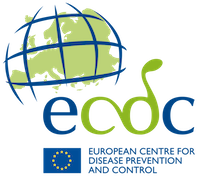European Invasive Bacterial Disease Surveillance Network (EU-IBD)
The activities of this network are aimed at integrating surveillance of all invasive bacterial infections caused by N. meningitidis, H. influenzae and S. pneumoniae from an epidemiological and laboratory point of view in order to contribute to reducing the burden of diseases associated with invasive bacterial infections.
The activities include annual data collection, evaluation, dissemination of relevant scientific and technical data, promoting the harmonization and external quality assurance of laboratory methods and improve the laboratory capacity to accurately characterise the isolates of N. meningitidis, H. influenzae and S. pneumoniae.
Background
From 1999 to 2007 the European Commission DG Sanco funded the European Invasive Bacterial Infections Surveillance network (EU-IBIS) which coordinated the surveillance activities in EU for invasive meningococcal and Haemophilus influenzae diseases and provided relevant epidemiological information to guide decision making process on vaccine policies.
In October 2007, the coordination of the network was transferred to ECDC and now is coordinated by the Vaccine Preventable Disease and Immunisation Section in the Directly Transmitted and Vaccine Preventable Disease (DVD) Unit. The epidemiological activities such as implementation of the new metadataset, data collection and analysis, is being carried out by ECDC through The EpiPulse Cases platform, which is progressively replacing The European Surveillance System (TESSy).
The IBD network comprises of ECDC’s Operational Contact Points for Epidemiology and Microbiology of Meningococcal disease, Invasive Pneumococcal Disease and Haemophilus Influenzae type B infection. Network members engage in surveillance activities, such as data collection, annual meeting, workshops and training, to promote information exchange and to strengthen its membership. Supplementary training videos and other materials are available to facilitate data submission, prior to data call.
The network is comprised of 27 EU Member States: Austria, Belgium, Bulgaria, Croatia, Cyprus, Czech Republic, Denmark, Estonia, Finland, France, Germany, Greece, Hungary, Ireland, Italy, Latvia, Lithuania, Luxembourg, Malta, Netherlands, Poland, Portugal, Romania, Slovakia, Slovenia, Spain, Sweden,; and the EEA/EFTA countries: Iceland, Liechtenstein and Norway.
Roles of ECDC and the European laboratory network to strengthen laboratory diagnostics for IBD surveillance
The IBD activities currently include the enhanced epidemiological surveillance activities and the laboratory activities from all European Union Member States, Iceland, Liechtenstein and Norway. For this reason, a sub-network has been created (IBD-Lab network) comprising of the ECDC’s Operational Contact Points for Microbiology of Meningococcal disease, Invasive Pneumococcal Disease and Haemophilus Influenzae type B infection.
The coordination of laboratory activities have regularly been outsourced through an open call for tender. As of 2025, the IBDLab-Net Consortium has been awarded the tender, under a Framework Contract awarded to Institut Pasteur Fondation (France) in collaboration with other institutions across the EU/EEA . The IBDLab-Net consortium is composed of: Institut Pasteur Fondation (France), Folkehelseinstituttet (Norway), Instituto de salud Carlos III (Spain), Instituto Nacional de Saude dr. Ricardo Jorge ( Portugal), Instituto Superiore di Sanita (Italy), Narodowy Instytut Lekow (Poland), University Hospital Orebro (Sweden), University of West Attica (Panepistimio Dytikis Attikis) (Greece), Sciensano (Belgium), Statens Serum Institut (SSI) (Denmark), Stichting Amsterdam UMC (The Netherlands), Terveyden Ja Hyvinvoinnin Laitos (Finnish Institute for Health and Welfare) (Finland).
The consortium members will work in close collaboration with ECDC to ensure the effective implementation of the planned activities.
Objectives of the IBD network
The general objectives for strengthening the surveillance of communicable diseases in the European Union are:
- Surveillance at the European level shall add value to Member States by directly strengthening and supporting the national surveillance systems and by coordinating the standardization of EU-wide surveillance activities to ensure better availability of more comparable data between countries.
- It shall strive to reduce the complexity of surveillance systems across Europe and enhance insight into communicable disease epidemiology in Europe.
To be able to achieve these broad goals, the following objectives have been identified for strengthening surveillance in the EU:
- Define surveillance outputs that will provide added-value by informing public health decisions and actions at the EU and/or Member State level;
- Collect and disseminate validated and comparable information on communicable diseases;
- Improve and update methodologies and quality assurance;
- Strengthen the laboratory surveillance in EU Member States;
- Consolidate outbreak detection and monitoring in EU Member States and at the EU level;
- Strengthen national capacities for surveillance and contributing to the evaluation of prevention and control programmes;
- Ensure patient confidentiality and legal foundation for data collection in individual Member States;
- Promote the wider use of surveillance data for a maximum of public health benefit, including research projects at a European level;
Objectives of the IBD-Lab network
- To coordinate the European laboratory network on IBD which will be part of a broader EU surveillance system for both epidemiological and laboratory components that are built up and coordinated by ECDC.
- To assess and improve laboratory performance for standardised and appropriate methods to be used for the laboratory diagnosis of invasive N. meningitidis and H. influenzae infections for ensuring accurate and comparative surveillance across Europe.
- To uphold a high level of laboratory preparedness and strengthen the microbiological expertise across Europe for N. meningitidis and H. influenzae through laboratory training workshops.
- To coordinate the molecular surveillance on N. meningitidis including evaluating new, rapid, automated molecular technologies, and maintain a high quality molecular surveillance across Europe, including assessment and improvement of laboratory performance of molecular typing.
Catchment area
Catchment area or the area under surveillance for IBD includes countries that are EU Member States and the three EEA States: Iceland Liechtenstein and Norway.
How does the network report?
During the first annual meeting on the Invasive Bacterial Infections Surveillance Network in March 2009, the network members expressed their wish to annually report to ECDC for all three invasive bacterial diseases. There is a fix deadline for the data submission, allowing enough time for data validation and data resubmission.
Data will be submitted as case based data according to the format described in the latest metadata set in EpiPulse Cases platform. If case based data are not available, aggregated reporting is acceptable.







